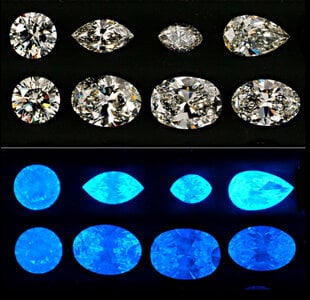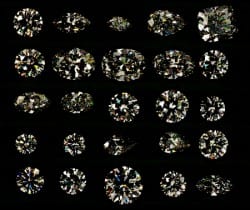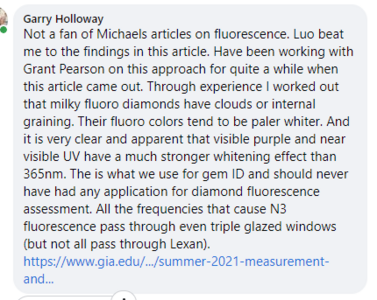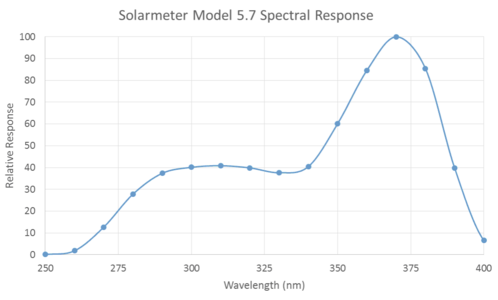- Joined
- Feb 26, 2003
- Messages
- 379
Here is a recent Facebook discussion by Renee Newman, GIA graduate-gemologist, and acclaimed author of over a
dozen guides to gems and jewelry, about fluorescence in diamonds.

“Here are eight diamonds with strong to very strong blue fluorescence photographed by Michael Cowing
under typical daylight balanced fluorescent lighting & long-wave UV.
None of the diamonds has a hazy, milky, oily or cloudy appearance.
When I was working on the fluorescence chapter of the 3rd Edition of my “Diamond Handbook,” I
asked several retail jewelers if they sold strongly fluorescent diamonds and some told me they never
stock them because they are milky and oily looking. A few even advise against buying diamonds with
medium fluorescence even though, as this photo illustrates, highly fluorescent diamonds can have good
transparency. But non-fluorescent diamonds can be milky too.”
Renee Newman is pointing out that the consumer and trade belief that blue fluorescent diamonds
typically have a hazy, milky, or cloudy appearance is untrue. As this photo illustrates, highly
fluorescent diamonds can have good transparency, and conversely non-fluorescent diamonds can be
milky or cloudy. Blue fluorescence and transparency are properties evaluated separately in grading.
GIA has called into question “the trade’s lower ‘bid’ prices for moderate to highly fluorescent
diamonds in the better colors”. Their study “challenges the perception held by many in the trade that
UV fluorescence generally has a negative effect on the overall appearance of a diamond.”
However, there is a valid reason for discounting diamonds with medium
to very strong fluorescence. That is the over grading of color that is too often observed in the trade.
Over grading results from the whitening effect due to blue fluorescence that is stimulated in the
diamond due to use of UV-containing, fluorescent lighting in color grading.
Check out the new two page summary article on this controversial subject at:

 acagemlab.com
acagemlab.com
or at adobe:
Cheers,
Michael
dozen guides to gems and jewelry, about fluorescence in diamonds.

“Here are eight diamonds with strong to very strong blue fluorescence photographed by Michael Cowing
under typical daylight balanced fluorescent lighting & long-wave UV.
None of the diamonds has a hazy, milky, oily or cloudy appearance.
When I was working on the fluorescence chapter of the 3rd Edition of my “Diamond Handbook,” I
asked several retail jewelers if they sold strongly fluorescent diamonds and some told me they never
stock them because they are milky and oily looking. A few even advise against buying diamonds with
medium fluorescence even though, as this photo illustrates, highly fluorescent diamonds can have good
transparency. But non-fluorescent diamonds can be milky too.”
Renee Newman is pointing out that the consumer and trade belief that blue fluorescent diamonds
typically have a hazy, milky, or cloudy appearance is untrue. As this photo illustrates, highly
fluorescent diamonds can have good transparency, and conversely non-fluorescent diamonds can be
milky or cloudy. Blue fluorescence and transparency are properties evaluated separately in grading.
GIA has called into question “the trade’s lower ‘bid’ prices for moderate to highly fluorescent
diamonds in the better colors”. Their study “challenges the perception held by many in the trade that
UV fluorescence generally has a negative effect on the overall appearance of a diamond.”
However, there is a valid reason for discounting diamonds with medium
to very strong fluorescence. That is the over grading of color that is too often observed in the trade.
Over grading results from the whitening effect due to blue fluorescence that is stimulated in the
diamond due to use of UV-containing, fluorescent lighting in color grading.
Check out the new two page summary article on this controversial subject at:

Over Grading of Blue Fluorescent Diamonds Summary - ACA Gemological Laboratory
There is a valid reason for discounting diamonds with medium to very strong fluorescence. That is the overgrading of color that is too often observed in the trade. Overgrading results from the whitening effect due to blue fluorescence that is stimulated in the diamond due to use of...
 acagemlab.com
acagemlab.com
or at adobe:
Cheers,
Michael









300x240.png)